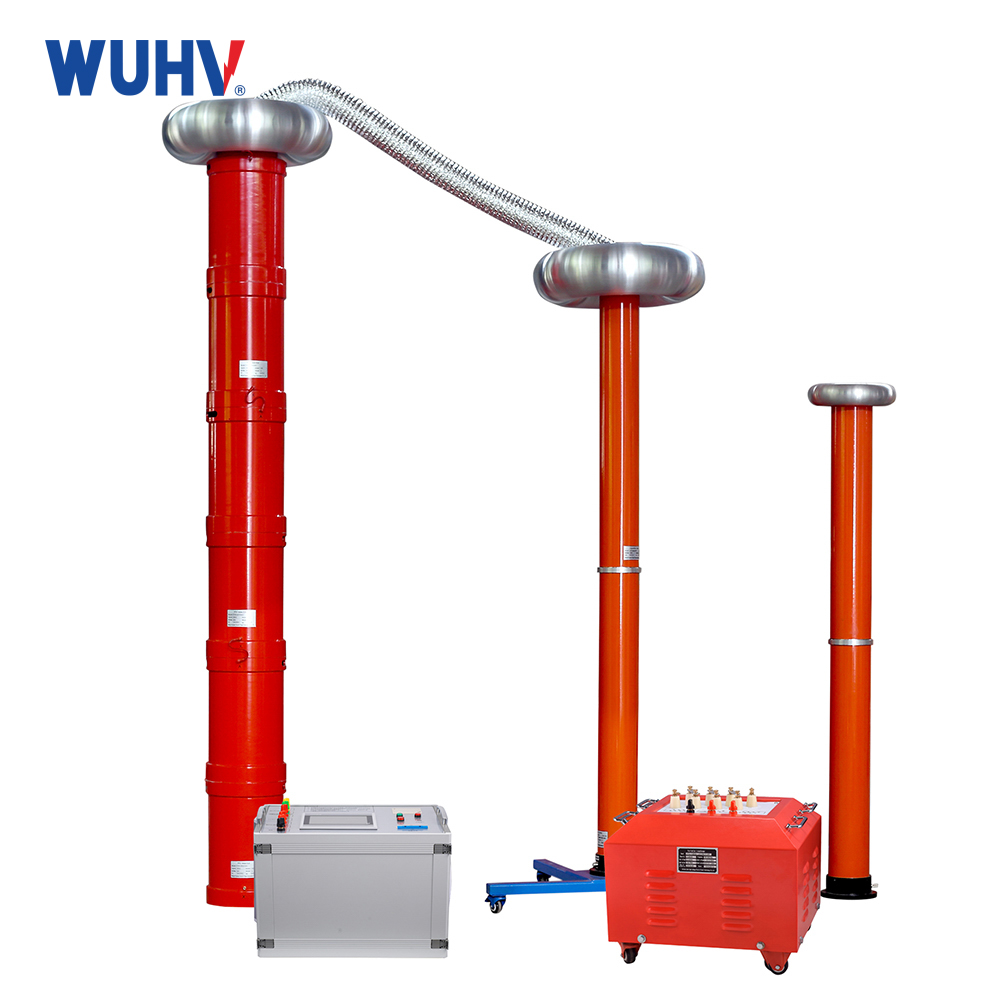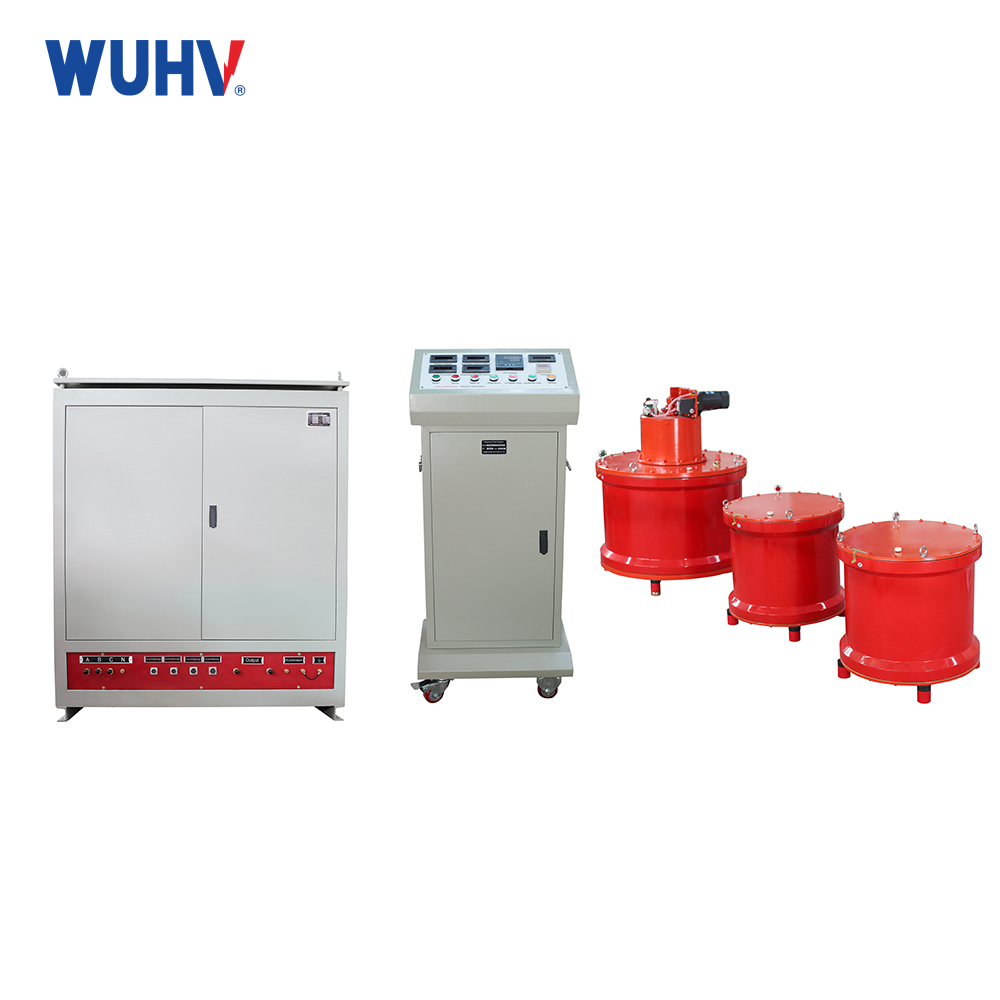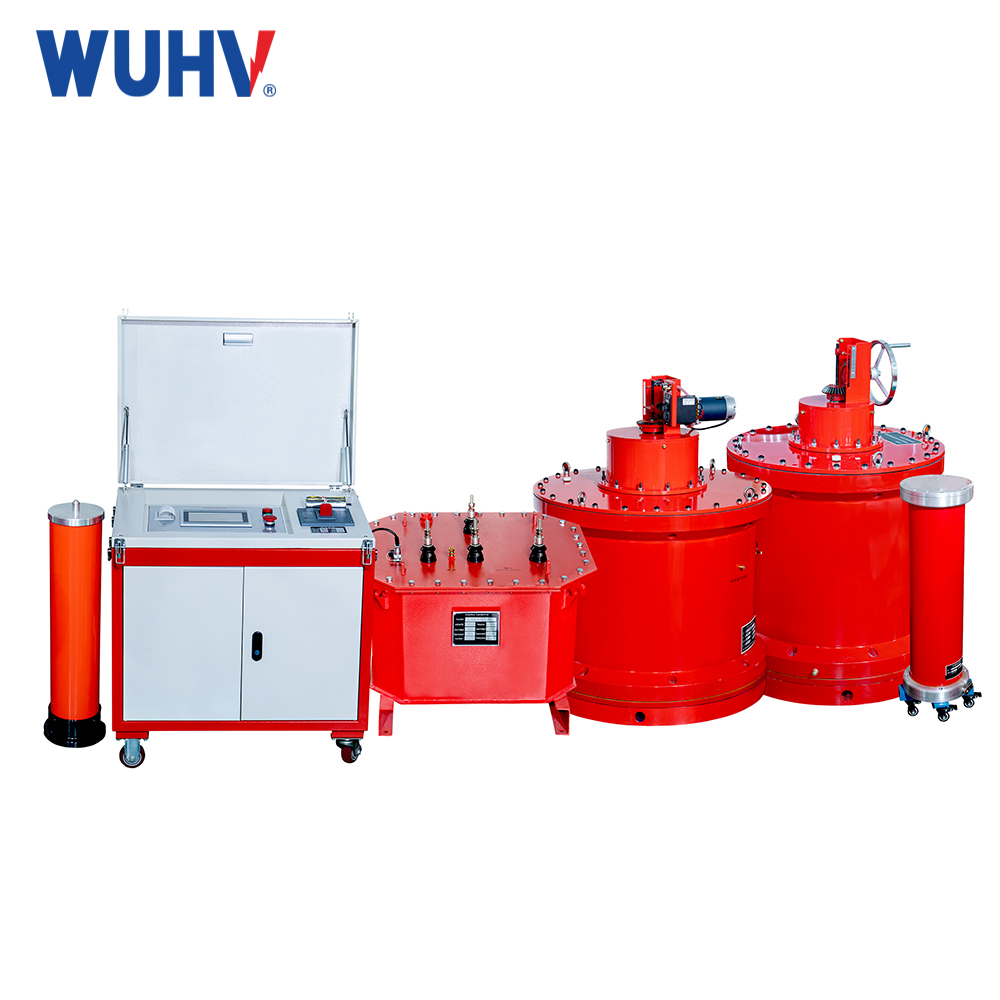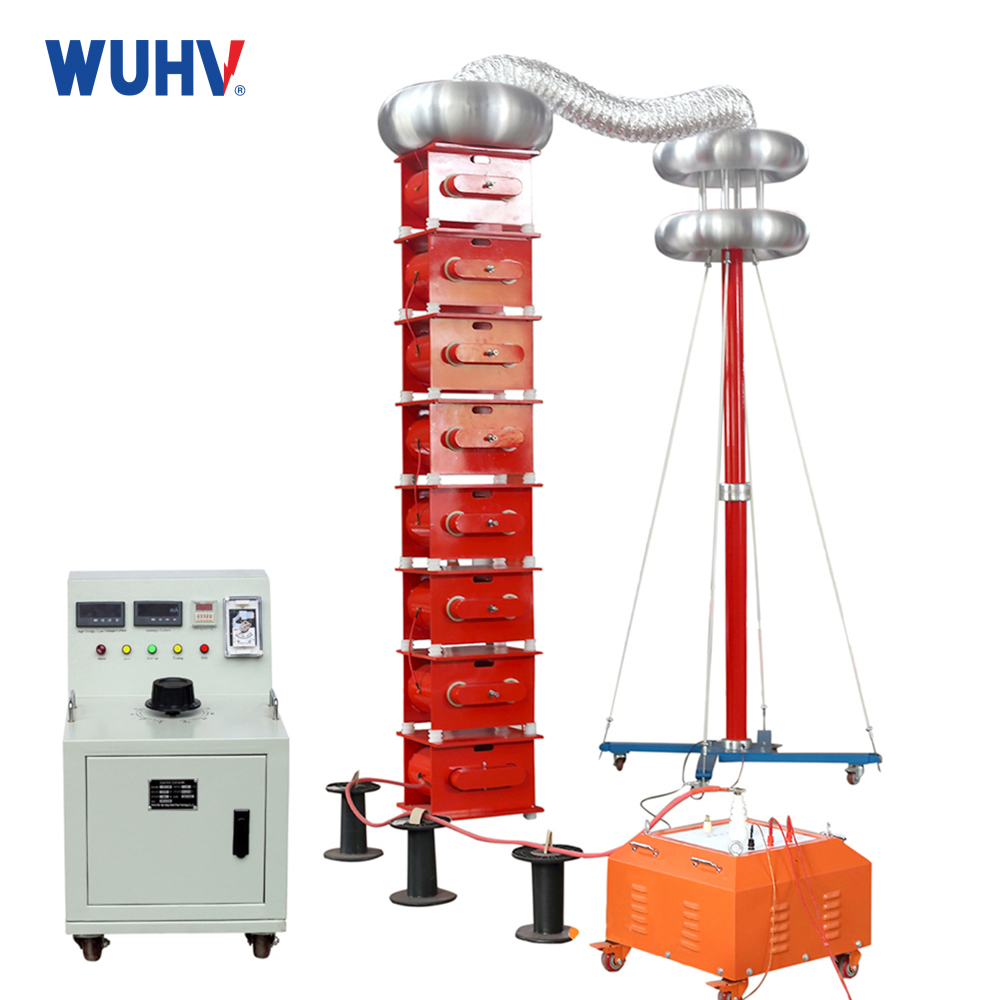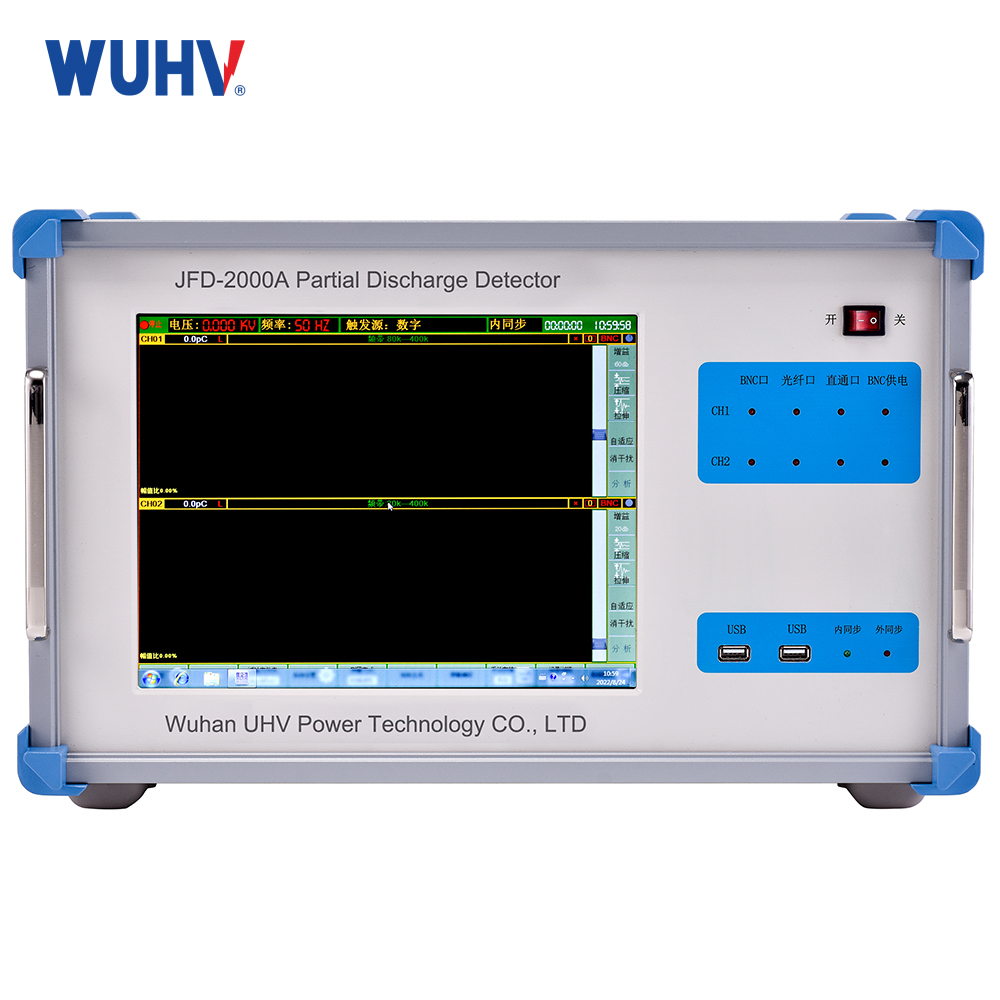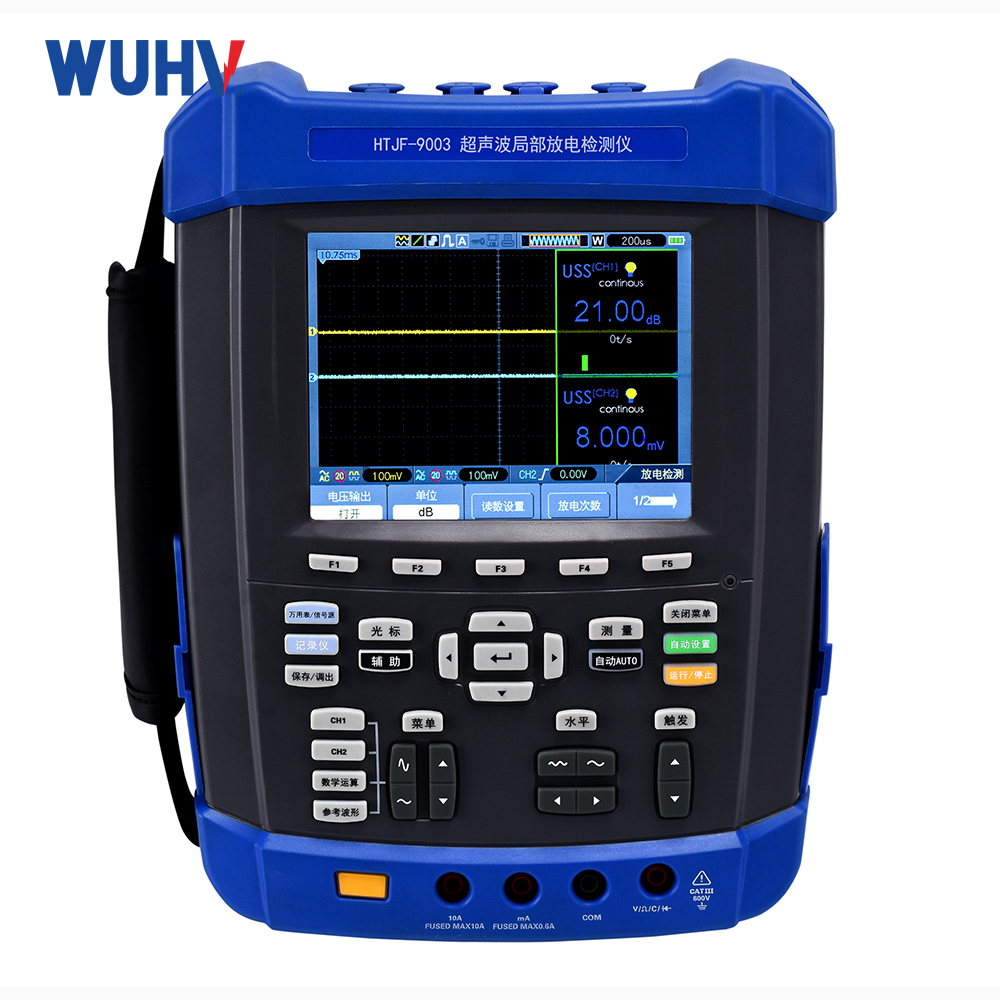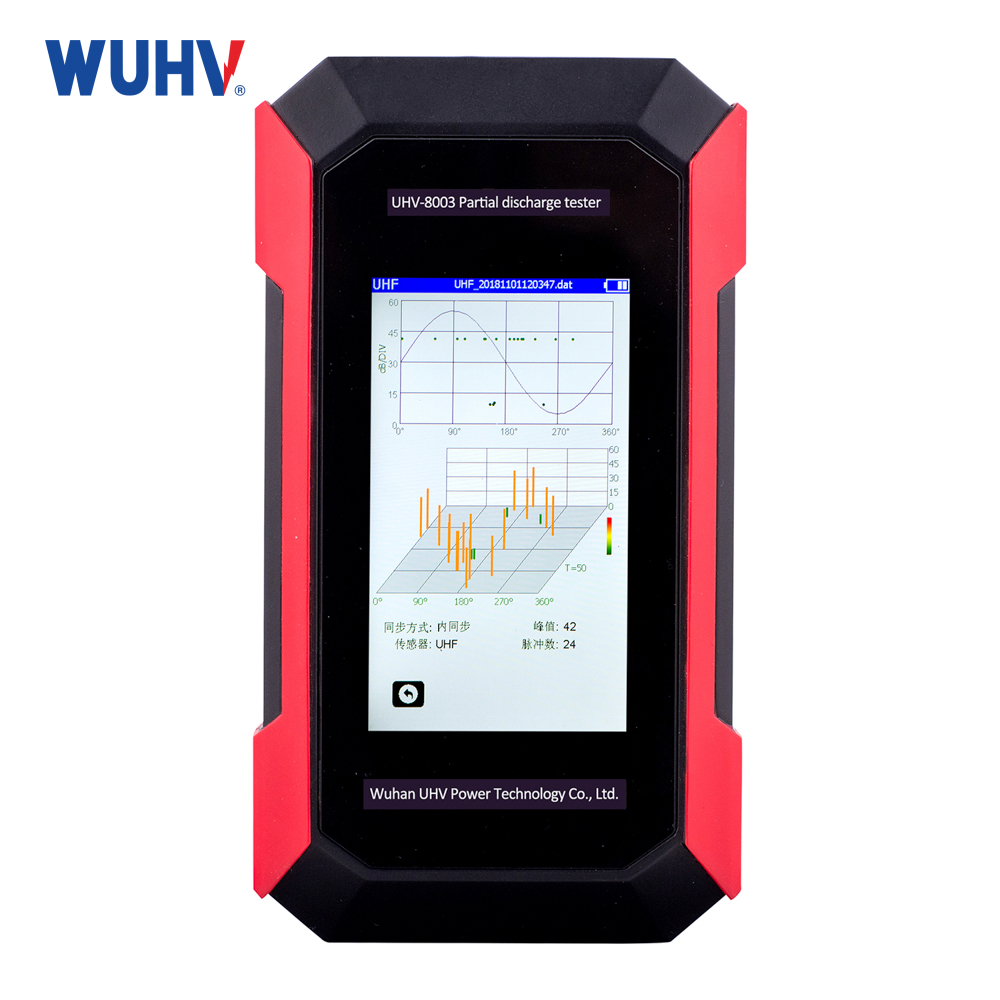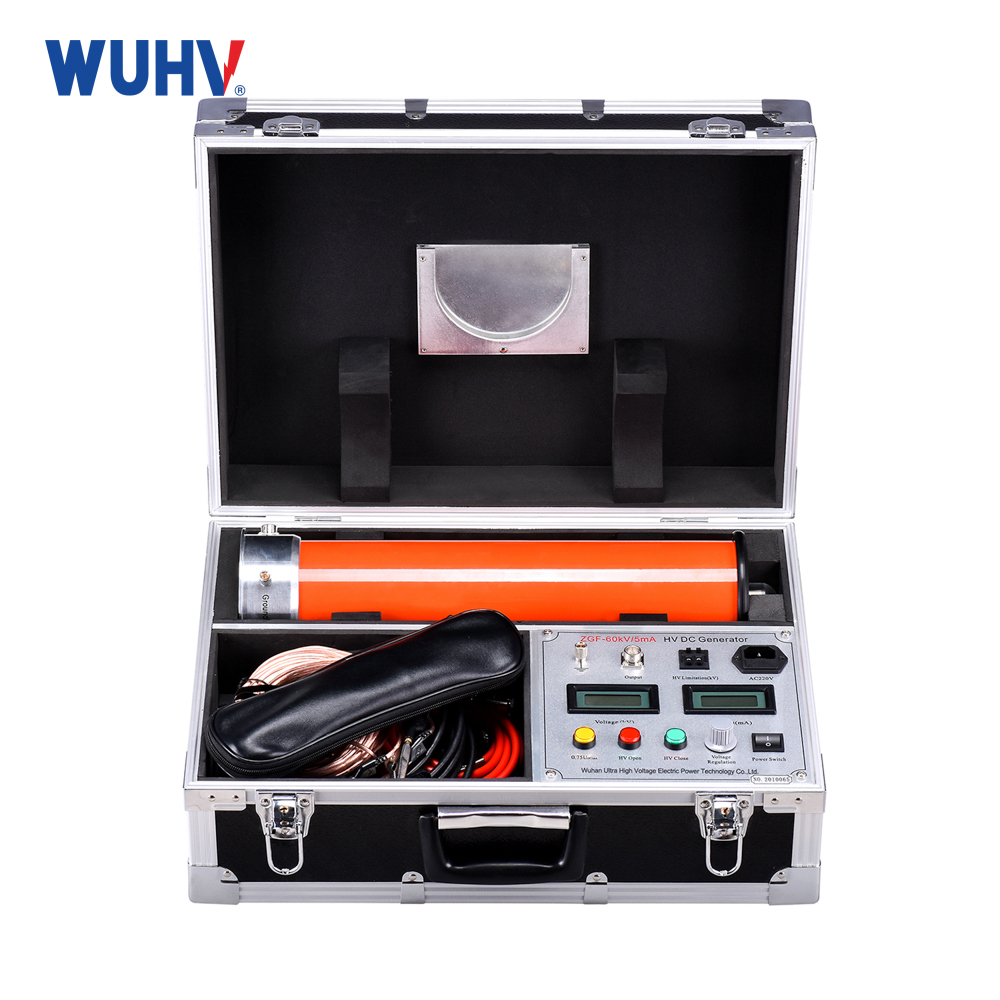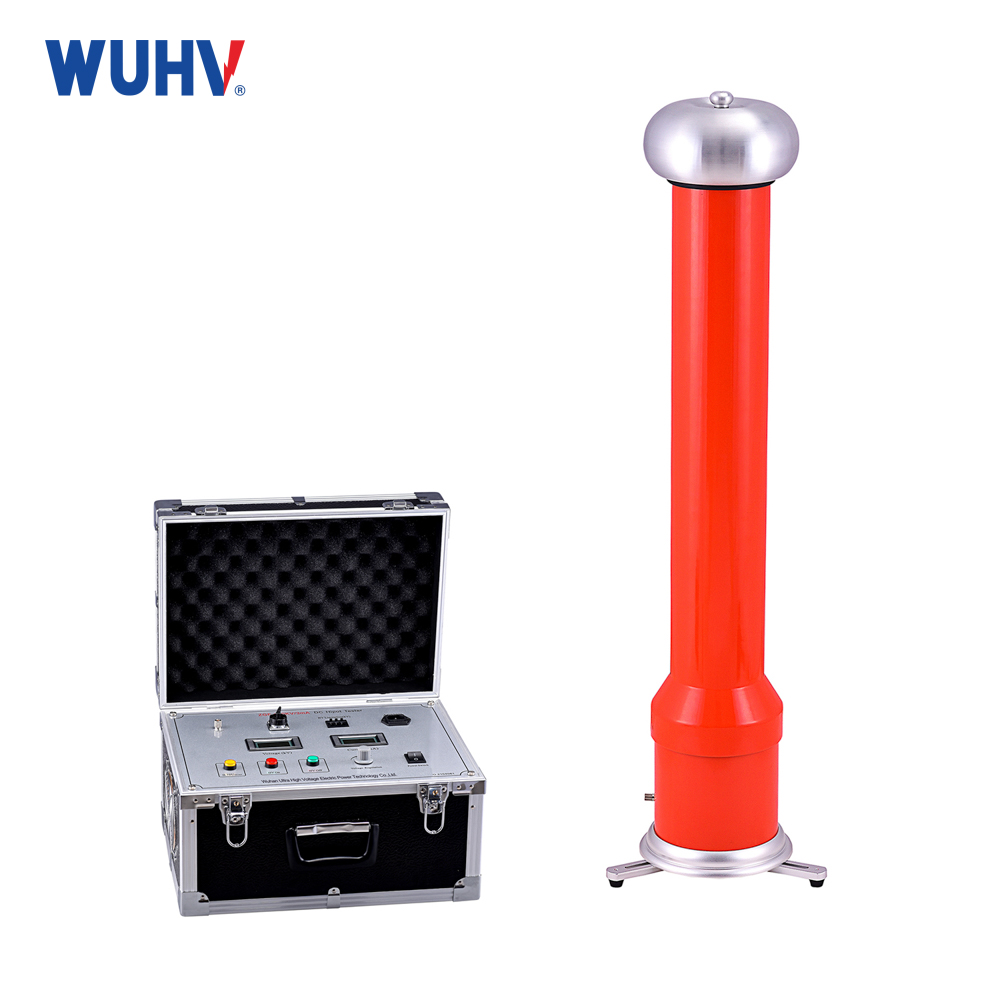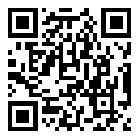Variable frequency series resonance? Wuhan UHV specializes in producing variable frequency series resonance, with a wide range of product selection and professional electrical testing. When looking for variable frequency series resonance, choose Wuhan UHV.
Principle of frequency conversion series resonance:
The variable frequency series resonant device uses the principle of series resonance, excites the series resonant circuit with an excitation transformer, adjusts the output frequency of the variable frequency controller, and causes the circuit inductance L and the test sample C to resonate in series. The resonant voltage is the voltage applied to the test sample. BPXZ-HT series resonance test, the variable frequency series resonance device mainly consists of a variable frequency controller, excitation transformer, high-voltage reactor, high-voltage voltage divider, etc. Variable frequency controllers are divided into two categories: desktop controllers with 20KW and above, and portable box controllers with 20KW and below; It consists of a controller and a filter. The main function of a variable frequency controller is to convert a 380V or 200V AC power frequency sine wave with fixed amplitude and frequency into a sine wave with adjustable amplitude and frequency. And provide power for the entire equipment. The function of the excitation transformer is to raise the voltage output by the variable frequency power supply to the appropriate test voltage. The high-voltage reactor L is an important component of the resonant circuit. When the power frequency is equal to 1/(2 π√ LCX), it undergoes series resonance with the test sample CX.
Analysis of the Principle of Frequency Conversion Series Resonance
In a series circuit composed of resistors, inductors, and capacitors, when the capacitance and inductance are equal, the voltage and current phases in the circuit are the same, and the circuit exhibits pure resistance, which is called series resonance [3]. When a series resonance occurs in a circuit, the impedance of the circuit is Z=R, at which point the total impedance of the circuit is minimized and the current of the circuit is maximized. The diagram shows a one port network composed of inductor and capacitor elements in series, with equivalent impedance. When resonance occurs, the port voltage is in phase with the current. The inductive or capacitive impedance at resonance is defined as the characteristic impedance ρ, and the ratio of the characteristic impedance ρ to the resistance R is the quality factor Q.
When the circuit resonates, the impedance value is minimized. When the port voltage is constant, the circuit current will reach its maximum value, as shown, and the magnitude of this value is only related to the resistance value of the resistor and not to the inductance and capacitance. During resonance, the inductance voltage and capacitance voltage are equal in value and opposite in phase, which is Q times the total voltage [4]. The current of an RLC series circuit is a function of the power supply frequency, that is, under the condition that the inductance L, capacitance C, and power supply voltage US of the circuit remain unchanged, different R values result in different Q values. The current amplitude frequency characteristic curve at different Q values is shown.
In order to study the influence of circuit parameters on resonance characteristics, a general resonance curve is usually used, as shown in the general resonance curve of a series resonant circuit. The shape of the universal resonance curve is only related to the Q value, and the sharper the curve shape, the better the frequency selection performance of the circuit. The frequency range corresponding to an amplitude greater than 0.707 times the peak value is the passband. Theoretical derivation shows that the passband is inversely proportional to the quality factor.
Application of frequency conversion series resonance
Variable frequency series resonance is suitable for power cable series resonance, power transformer series resonance, generator sets (hydro generators or thermal power generators), motor series resonance, switchgear series resonance, GIS switches, and is widely used in industries such as power, metallurgy, petroleum, and chemical. It is suitable for the handover and preventive testing of large capacity, high-voltage capacitive samples.



